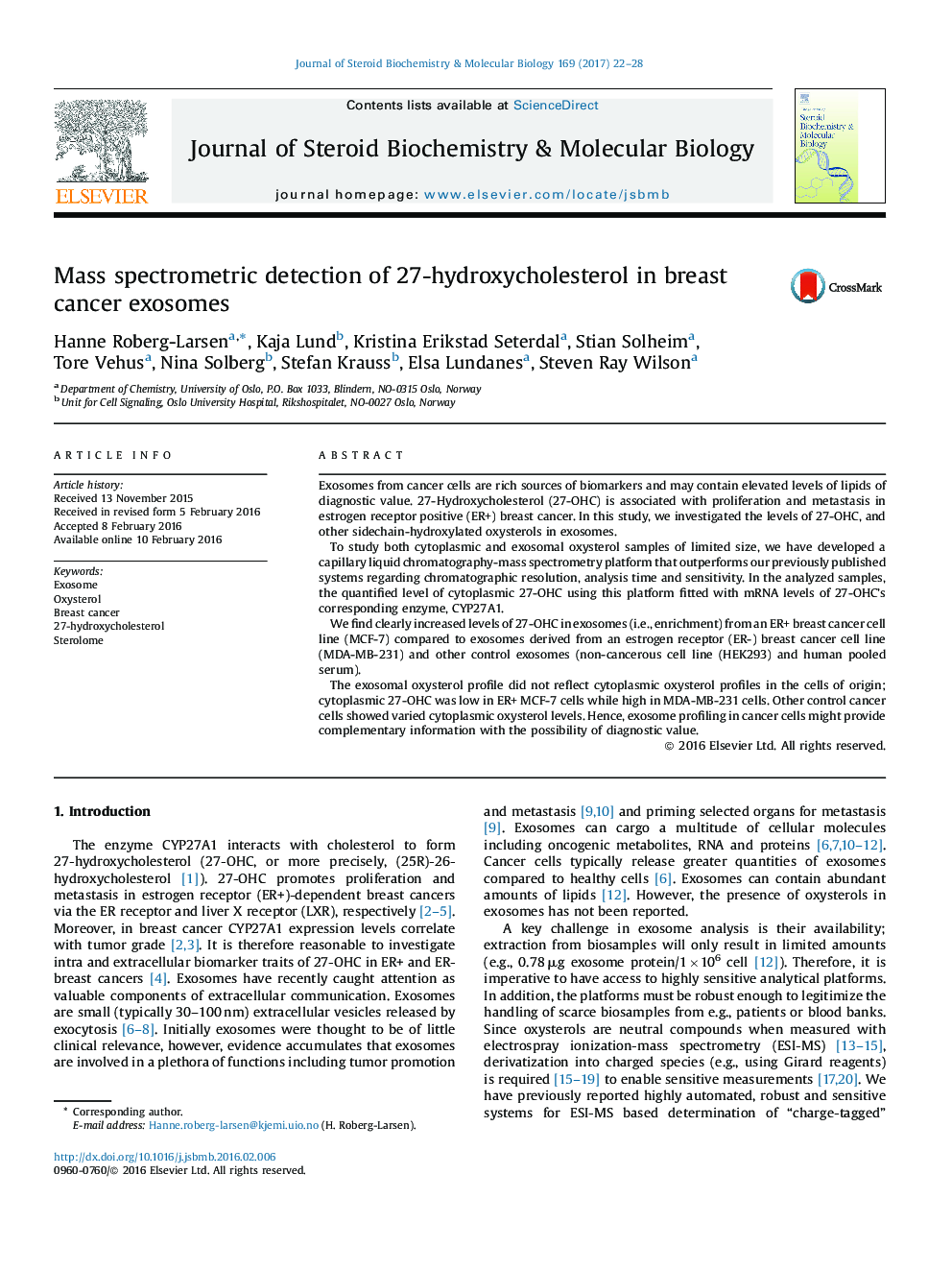| Article ID | Journal | Published Year | Pages | File Type |
|---|---|---|---|---|
| 5513076 | The Journal of Steroid Biochemistry and Molecular Biology | 2017 | 7 Pages |
â¢Oxysterols detected in exosomes.â¢Enrichment of 27-OHC observed in exosomes from ER+ breast cancer cells.â¢Oxysterol profile differs between exosomes and cells.â¢Novel capillary LC-MS system allows high performance exosome analysis.
Exosomes from cancer cells are rich sources of biomarkers and may contain elevated levels of lipids of diagnostic value. 27-Hydroxycholesterol (27-OHC) is associated with proliferation and metastasis in estrogen receptor positive (ER+) breast cancer. In this study, we investigated the levels of 27-OHC, and other sidechain-hydroxylated oxysterols in exosomes.To study both cytoplasmic and exosomal oxysterol samples of limited size, we have developed a capillary liquid chromatography-mass spectrometry platform that outperforms our previously published systems regarding chromatographic resolution, analysis time and sensitivity. In the analyzed samples, the quantified level of cytoplasmic 27-OHC using this platform fitted with mRNA levels of 27-OHC's corresponding enzyme, CYP27A1.We find clearly increased levels of 27-OHC in exosomes (i.e., enrichment) from an ER+ breast cancer cell line (MCF-7) compared to exosomes derived from an estrogen receptor (ER-) breast cancer cell line (MDA-MB-231) and other control exosomes (non-cancerous cell line (HEK293) and human pooled serum).The exosomal oxysterol profile did not reflect cytoplasmic oxysterol profiles in the cells of origin; cytoplasmic 27-OHC was low in ER+ MCF-7 cells while high in MDA-MB-231 cells. Other control cancer cells showed varied cytoplasmic oxysterol levels. Hence, exosome profiling in cancer cells might provide complementary information with the possibility of diagnostic value.
